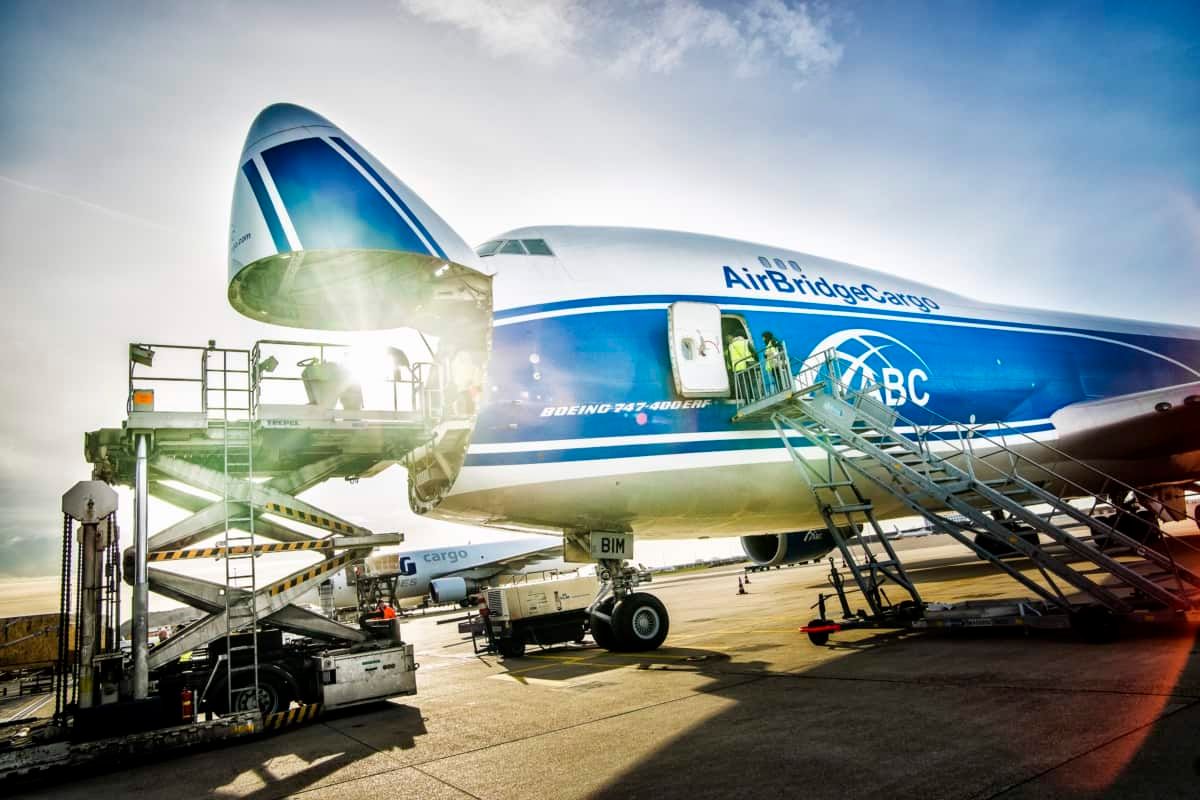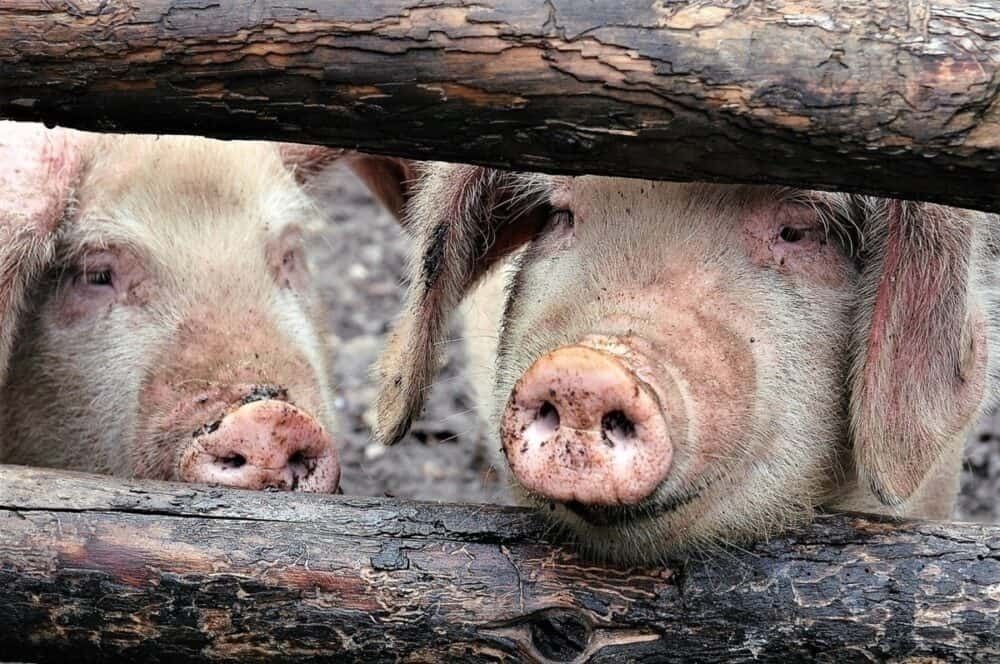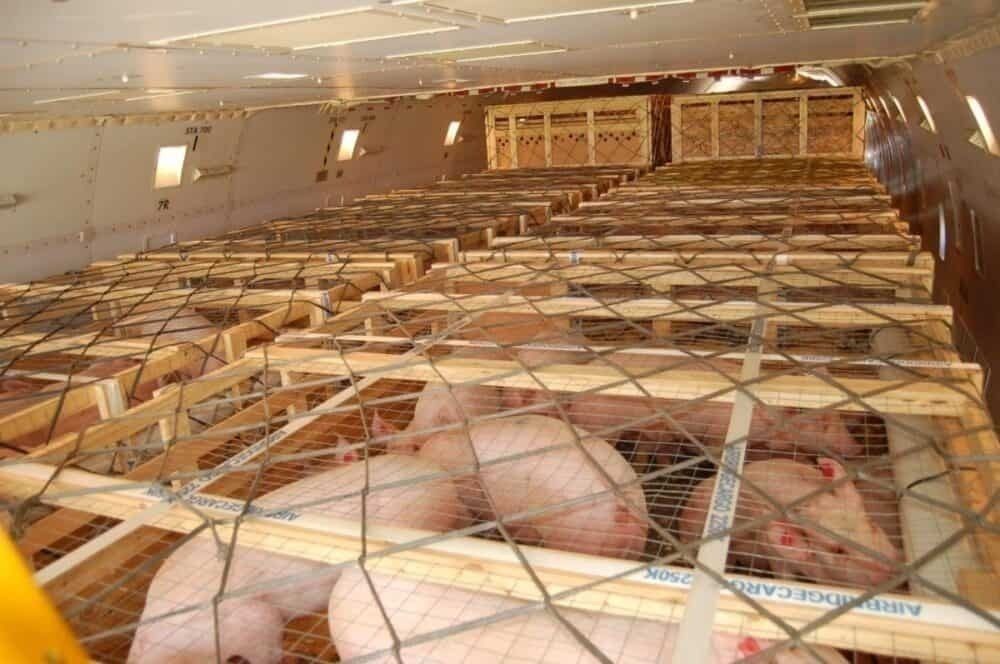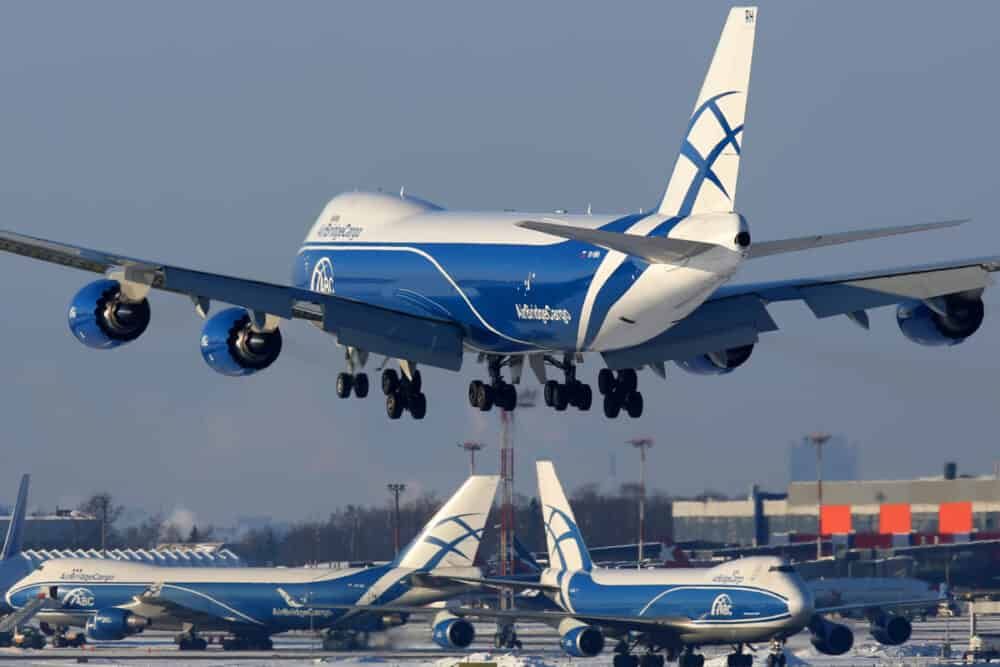A Russian cargo carrier has proven once and for all that pigs do fly. More than 3,000 happy hogs have earned their wings, traveling a mile high between Europe and China onboard a Boeing 747 operated by Volga Dnepr.
A pig-culiar problem
The Chinese are lacking in pigs. You could say they're squealing out for swine after an outbreak of African swine fever obliterated the nation's herds of hogs. First detected in August 2018, the deadly disease has decimated the pig population by around 50%.
China loves pigs, but not for their superior land clearing abilities or cute curly tails. The country is, in fact, both the world's biggest producer and, simultaneously, its biggest importer of pork meat. The Chinese eat an average of 30kg of pork a year per person, twice as much as the UK.
The loss of half of its swine based sustenance has left the Chinese sore. Rocketing prices for pork-based products, by 125% at the start of this year, went so far as to drive up inflation in China, breaking through the government target of 3% to rise to 3.8% in December. Clearly, something had to be done.
At first, China turned to other countries to satisfy its porcine procurement needs. In the first four months of the year, the country imported more than 250,000 tons of pork from the US. To put that in perspective, for the whole of 2019, less than 245,000 tons were brought into the country.
But this was not sustainable. The world's total global pork exports are around eight million tons a year, 24 million fewer than the Chinese consume. There simply wasn't enough pork in the world. Added to this, measures to stem the spread of COVID-19 exacerbated the problem. Clearly, China needed to get to the root of the problem.
Pigs might fly
In steps Volga Dnepr, with a philanthro-pig proposition. The company agreed to ship thousands of breeding pigs from France to China, to help repopulate the local supply. Using its Boeing 747F aircraft, the Russian cargo specialist has so far moved in excess of 3,000 pigs across 6,450 miles to help China out of its pigkle.
The piggies are housed in secure wooden crates and shipped in comfort across the world. To be clear, these pigs aren't destined for slaughter, not initially at least. They'll be sent to pastures in the hope of happy breeding and repopulation of the local supply.
Going the whole hog
Volga Dnepr is perhaps one of the few winners from the COVID crisis. Capacity for cargo shipments dropped by 42% in April, as thousands of passenger aircraft stopped flying, and the potential to move cargo in the bellies of these planes dried up. As well as pigs, Volga Dnepr has been busy at work, shipping everything from regular goods to PPE and medical equipment.
The airline expects record revenues this year, with predictions of $2bn in total. That's a third more than it achieved in 2019. President of the Volga-Dnepr Group, Alexey Isaykin, told Live Mint in an interview,
"The geography of our shipments is expanding, following the spread of coronavirus. We just started shipping Chinese medical goods to Africa and are getting first inquiries from Latin America. I think India will be next."
While the pigs are headed to China, Volga's 747s are coming back with other things on board. Medical goods now account for more than half of global air freight, and cargo operators like Volga Dnepr have been instrumental in supplying the world with the tools it needs to fight the pandemic.




